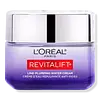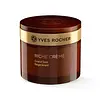What's inside
What's inside
 Key Ingredients
Key Ingredients

 Benefits
Benefits

 Concerns
Concerns

 Ingredients Side-by-side
Ingredients Side-by-side

Water
Skin ConditioningPropylene Glycol
HumectantGlycerin
HumectantDimethicone
EmollientAlcohol Denat.
AntimicrobialOctyldodecanol
EmollientCaprylyl Methicone
Skin ConditioningBetaine
HumectantNiacinamide
SmoothingIsohexadecane
EmollientHydroxypalmitoyl Sphinganine
Skin ConditioningSodium Acetylated Hyaluronate
HumectantSodium Hyaluronate
HumectantSodium Hydroxide
Buffering2-Oleamido-1,3-Octadecanediol
Skin ConditioningTocopheryl Acetate
AntioxidantCeramide NP
Skin ConditioningHydrogenated Lecithin
EmulsifyingAcrylates/C10-30 Alkyl Acrylate Crosspolymer
Emulsion StabilisingCarbomer
Emulsion StabilisingXanthan Gum
EmulsifyingDimethiconol
EmollientChlorphenesin
AntimicrobialPhenoxyethanol
PreservativeWater, Propylene Glycol, Glycerin, Dimethicone, Alcohol Denat., Octyldodecanol, Caprylyl Methicone, Betaine, Niacinamide, Isohexadecane, Hydroxypalmitoyl Sphinganine, Sodium Acetylated Hyaluronate, Sodium Hyaluronate, Sodium Hydroxide, 2-Oleamido-1,3-Octadecanediol, Tocopheryl Acetate, Ceramide NP, Hydrogenated Lecithin, Acrylates/C10-30 Alkyl Acrylate Crosspolymer, Carbomer, Xanthan Gum, Dimethiconol, Chlorphenesin, Phenoxyethanol
Water
Skin ConditioningGlycerin
HumectantMethylpropanediol
SolventEthylhexyl Stearate
EmollientCocos Nucifera Oil
MaskingDimethicone
EmollientBrassica Campestris Seed Oil
Skin ConditioningSteareth-2
EmulsifyingHelianthus Annuus Seed Oil
EmollientMacadamia Ternifolia Seed Oil
EmollientGlyceryl Stearate
EmollientSteareth-21
CleansingHydrogenated Coconut Oil
EmollientCoco-Caprylate/Caprate
EmollientStearyl Alcohol
EmollientSimmondsia Chinensis Seed Oil
EmollientCentaurea Cyanus Flower Water
Skin ConditioningButyrospermum Parkii Butter
Skin ConditioningCandelilla Cera
EmollientAphloia Theiformis Leaf Extract
AstringentSesamum Indicum Seed Oil
EmollientPhenoxyethanol
PreservativeParfum
MaskingXanthan Gum
EmulsifyingOlea Europaea Fruit Oil
MaskingEthyl Linoleate
EmollientZea Mays Germ Oil
EmollientRicinus Communis Seed Oil
MaskingPrunus Amygdalus Dulcis Oil
Skin ConditioningCorylus Avellana Seed Oil
EmollientCarthamus Tinctorius Seed Oil
MaskingRetinyl Palmitate
Skin ConditioningGlycine Soja Sterols
EmollientLecithin
EmollientTocopheryl Acetate
AntioxidantSorbic Acid
PreservativePrunus Persica Kernel Oil
EmollientPrunus Armeniaca Kernel Oil
MaskingPistacia Vera Seed Oil
Skin ConditioningPersea Gratissima Oil
Skin ConditioningOryza Sativa Germ Oil
EmollientOrbignya Oleifera Seed Oil
EmollientMangifera Indica Seed Oil
EmollientJuglans Regia Seed Oil
Skin ConditioningGossypium Herbaceum Seed Oil
Skin ConditioningCamellia Oleifera Seed Oil
Skin ConditioningBHT
AntioxidantSilybum Marianum Seed Oil
Skin ConditioningRosa Canina Fruit Oil
EmollientOenothera Biennis Seed Extract
Skin ConditioningLimnanthes Alba Seed Oil
Skin ConditioningCarapa Guaianensis Seed Oil
Skin ConditioningCamelina Sativa Seed Oil
Skin ConditioningArgania Spinosa Kernel Oil
EmollientTetrasodium EDTA
Sodium Hydroxide
BufferingRosa Damascena Extract
MaskingSodium Benzoate
MaskingTocopherol
AntioxidantPotassium Sorbate
PreservativeCitric Acid
BufferingCitronellol
PerfumingAlcohol
AntimicrobialPropyl Gallate
AntioxidantWater, Glycerin, Methylpropanediol, Ethylhexyl Stearate, Cocos Nucifera Oil, Dimethicone, Brassica Campestris Seed Oil, Steareth-2, Helianthus Annuus Seed Oil, Macadamia Ternifolia Seed Oil, Glyceryl Stearate, Steareth-21, Hydrogenated Coconut Oil, Coco-Caprylate/Caprate, Stearyl Alcohol, Simmondsia Chinensis Seed Oil, Centaurea Cyanus Flower Water, Butyrospermum Parkii Butter, Candelilla Cera, Aphloia Theiformis Leaf Extract, Sesamum Indicum Seed Oil, Phenoxyethanol, Parfum, Xanthan Gum, Olea Europaea Fruit Oil, Ethyl Linoleate, Zea Mays Germ Oil, Ricinus Communis Seed Oil, Prunus Amygdalus Dulcis Oil, Corylus Avellana Seed Oil, Carthamus Tinctorius Seed Oil, Retinyl Palmitate, Glycine Soja Sterols, Lecithin, Tocopheryl Acetate, Sorbic Acid, Prunus Persica Kernel Oil, Prunus Armeniaca Kernel Oil, Pistacia Vera Seed Oil, Persea Gratissima Oil, Oryza Sativa Germ Oil, Orbignya Oleifera Seed Oil, Mangifera Indica Seed Oil, Juglans Regia Seed Oil, Gossypium Herbaceum Seed Oil, Camellia Oleifera Seed Oil, BHT, Silybum Marianum Seed Oil, Rosa Canina Fruit Oil, Oenothera Biennis Seed Extract, Limnanthes Alba Seed Oil, Carapa Guaianensis Seed Oil, Camelina Sativa Seed Oil, Argania Spinosa Kernel Oil, Tetrasodium EDTA, Sodium Hydroxide, Rosa Damascena Extract, Sodium Benzoate, Tocopherol, Potassium Sorbate, Citric Acid, Citronellol, Alcohol, Propyl Gallate
 Reviews
Reviews

Ingredients Explained
These ingredients are found in both products.
Ingredients higher up in an ingredient list are typically present in a larger amount.
Dimethicone is a type of synthetic silicone created from natural materials such as quartz.
What it does:
Dimethicone comes in different viscosities:
Depending on the viscosity, dimethicone has different properties.
Ingredients lists don't always show which type is used, so we recommend reaching out to the brand if you have questions about the viscosity.
This ingredient is unlikely to cause irritation because it does not get absorbed into skin. However, people with silicone allergies should be careful about using this ingredient.
Note: Dimethicone may contribute to pilling. This is because it is not oil or water soluble, so pilling may occur when layered with products. When mixed with heavy oils in a formula, the outcome is also quite greasy.
Learn more about DimethiconeGlycerin is already naturally found in your skin. It helps moisturize and protect your skin.
A study from 2016 found glycerin to be more effective as a humectant than AHAs and hyaluronic acid.
As a humectant, it helps the skin stay hydrated by pulling moisture to your skin. The low molecular weight of glycerin allows it to pull moisture into the deeper layers of your skin.
Hydrated skin improves your skin barrier; Your skin barrier helps protect against irritants and bacteria.
Glycerin has also been found to have antimicrobial and antiviral properties. Due to these properties, glycerin is often used in wound and burn treatments.
In cosmetics, glycerin is usually derived from plants such as soybean or palm. However, it can also be sourced from animals, such as tallow or animal fat.
This ingredient is organic, colorless, odorless, and non-toxic.
Glycerin is the name for this ingredient in American English. British English uses Glycerol/Glycerine.
Learn more about GlycerinPhenoxyethanol is a preservative that has germicide, antimicrobial, and aromatic properties. Studies show that phenoxyethanol can prevent microbial growth. By itself, it has a scent that is similar to that of a rose.
It's often used in formulations along with Caprylyl Glycol to preserve the shelf life of products.
Sodium Hydroxide is also known as lye or caustic soda. It is used to adjust the pH of products; many ingredients require a specific pH to be effective.
In small amounts, sodium hydroxide is considered safe to use. However, large amounts may cause chemical burns due to its high alkaline.
Your skin has a natural pH and acid mantle. This acid mantle helps prevent harmful bacteria from breaking through. The acid mantle also helps keep your skin hydrated.
"Alkaline" refers to a high pH level. A low pH level would be considered acidic.
Learn more about Sodium HydroxideTocopheryl Acetate is AKA Vitamin E. It is an antioxidant and protects your skin from free radicals. Free radicals damage the skin by breaking down collagen.
One study found using Tocopheryl Acetate with Vitamin C decreased the number of sunburned cells.
Tocopheryl Acetate is commonly found in both skincare and dietary supplements.
Learn more about Tocopheryl AcetateWater. It's the most common cosmetic ingredient of all. You'll usually see it at the top of ingredient lists, meaning that it makes up the largest part of the product.
So why is it so popular? Water most often acts as a solvent - this means that it helps dissolve other ingredients into the formulation.
You'll also recognize water as that liquid we all need to stay alive. If you see this, drink a glass of water. Stay hydrated!
Learn more about WaterXanthan gum is used as a stabilizer and thickener within cosmetic products. It helps give products a sticky, thick feeling - preventing them from being too runny.
On the technical side of things, xanthan gum is a polysaccharide - a combination consisting of multiple sugar molecules bonded together.
Xanthan gum is a pretty common and great ingredient. It is a natural, non-toxic, non-irritating ingredient that is also commonly used in food products.
Learn more about Xanthan Gum